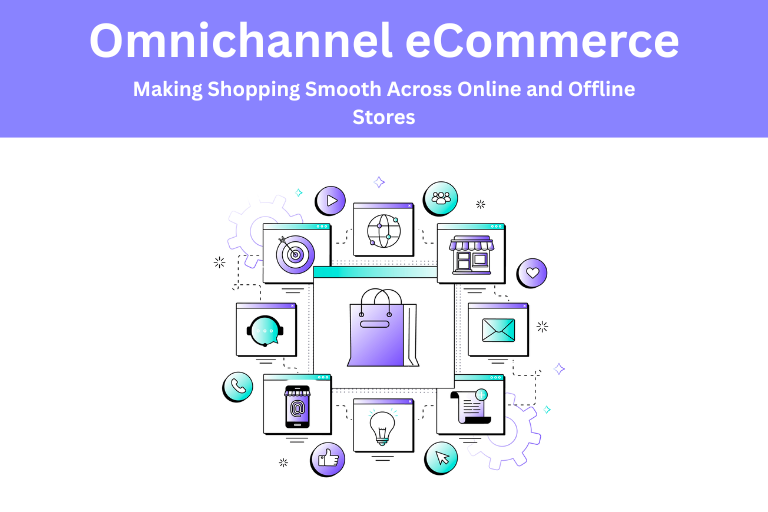Starting an ecommerce business is exciting—until reality hits. You’ve got the perfect product, a sleek website, and maybe even some traffic. But then… crickets. No sales, abandoned carts, and a slow, painful decline.
You’re not alone. In fact, 90% of ecommerce startups fail within 120 days. But why?
What’s causing so many businesses to crash before they even take off?
In this guide, we’ll explore the biggest ecommerce pain points, break them down, and offer practical solutions to help you build a thriving online business.
Ecommerce Pain Points List (Quick Recap)
Before we dive into details, here’s a quick summary of the top pain points you might face in your ecommerce journey:
Customer Pain Points:
✔️ Complicated checkout process
✔️ Slow website speed & performance
✔️ Lack of trust & security concerns
✔️ High shipping costs & delayed delivery
✔️ Limited payment options
✔️ Poor mobile shopping experience
Business Owner Pain Points:
✔️ Low website traffic & poor visibility
✔️ High cart abandonment rates
✔️ Product return & refund issues
✔️ Inventory & supply chain management problems
✔️ Customer support challenges
✔️ Scaling issues & high operational costs
Now, let’s break each one down and discuss how to solve them.
Understanding Pain Points in Ecommerce
A pain point in Ecommerce is any problem or frustration that prevents customers from making a purchase or causes headaches for business owners.
Identifying these issues is crucial for success because when you solve them, you increase conversions, boost sales, and create a better customer experience.
Common Customer Pain Points in Ecommerce (And How to Fix Them)
1. Complicated Checkout Process
Did you know that 69.99% of online shoppers abandon their carts? A complicated checkout process is often the main reason.
Why this happens:
- Too many form fields
- Forced account creation
- Limited payment options
- Unexpected fees at checkout
How to fix it:
✅ Offer guest checkout
✅ Provide multiple payment methods (credit cards, PayPal, Apple Pay)
✅ Display all costs upfront to avoid surprises
✅ Use one-page or auto-filled checkout forms
2. Slow Website Speed & Poor Performance
Customers expect a fast and seamless shopping experience. If your site takes longer than 3 seconds to load, you could lose nearly 40% of potential buyers.
How to fix it:
✅ Use fast hosting & a CDN (Content Delivery Network)
✅ Optimize images to reduce load time
✅ Minimize plugins & unnecessary scripts
✅ Enable caching for faster performance
3. Lack of Trust & Security Concerns
Would you enter your credit card details on a site that looks suspicious? Neither would your customers.
How to fix it:
✅ Use an SSL certificate to secure transactions
✅ Display customer reviews and testimonials
✅ Show trust badges (McAfee, Norton, etc.)
✅ Have a clear and transparent return policy
4. High Shipping Costs & Delayed Delivery
50% of shoppers abandon carts due to unexpected shipping costs.
How to fix it:
✅ Offer free shipping if possible
✅ Partner with multiple shipping carriers for better rates
✅ Provide real-time tracking updates
✅ Display delivery estimates on product pages
5. Limited Payment Options
Customers want choices. If their preferred payment method isn’t available, they may leave.
How to fix it:
✅ Accept PayPal, Apple Pay, Google Pay, and credit/debit cards
✅ Offer Buy Now, Pay Later (BNPL) options like Klarna or Afterpay
✅ Enable cryptocurrency payments if relevant
6. Poor Mobile Shopping Experience
Over 70% of Ecommerce sales happen on mobile, yet many websites still aren’t optimized.
How to fix it:
✅ Use a mobile-first website design
✅ Ensure fast loading on mobile devices
✅ Enable a smooth checkout experience for mobile users
✅ Implement Google AMP (Accelerated Mobile Pages) for faster browsing
Common Business Owner Pain Points in Ecommerce (And How to Fix Them)
1. Low Website Traffic & Poor Visibility

Without traffic, there are no sales. The competition is fierce, and standing out is tough.
How to fix it:
✅ Invest in SEO (Search Engine Optimization) to rank higher on Google
✅ Run Google Ads and Facebook Ads for targeted traffic
✅ Build a strong social media presence
✅ Start a blog (just like this one!) to drive organic traffic
2. High Cart Abandonment Rates
We already know that 70% of shoppers abandon carts. But how do you get them back?
How to fix it:
✅ Use abandoned cart email reminders
✅ Offer limited-time discounts to encourage checkout
✅ Install exit-intent popups
✅ Simplify the checkout process
3. Product Return & Refund Issues
Returns are inevitable, but they don’t have to be painful.
How to fix it:
✅ Have a clear return policy on your website
✅ Provide prepaid return labels for hassle-free returns
✅ Use high-quality product images and detailed descriptions to reduce returns
4. Inventory & Supply Chain Management Problems
Stocking too much or too little can kill profits.
How to fix it:
✅ Use inventory management software
✅ Implement just-in-time inventory practices
✅ Diversify suppliers to avoid supply chain disruptions
5. Scaling Issues & High Operational Costs
Growing your business shouldn’t be a struggle.
How to fix it:
✅ Automate tasks like email marketing, order processing, and inventory tracking
✅ Outsource non-core activities like customer service
✅ Invest in cloud-based Ecommerce platforms
Real-World Ecommerce Pain Points (Case Studies)
Let’s se how big brands tackled their Ecommerce nightmares and won!
✅ Case Study 1: ASOS Popups do the magic
- ASOS saw too many abandoned carts.
- Their fix? Exit-intent popups offering sweet deals before customers left.
- The result? 30% fewer abandoned carts and a revenue boost!
✅ Case Study 2: Zara – AI-Powered Shopping Experience
- Zara struggled with online engagement.
- Solution? AI-driven recommendations that showed customers what they’d love before they even searched.
- Higher engagement = more sales.
✅ Case Study 3: Best Buy – Winning with AI Chatbots
- They couldn’t manage overloaded customer service.
- Best Buy launched AI chatbots that answered questions fast, cutting response times and making customers happy.
- More trust = more sales!
✅ Case Study 4: H&M – Crushing Mobile Sales with an App
- H&M wanted more mobile shoppers. They created an exclusive shopping app with VIP discounts.
- Shoppers loved it, and H&M’s mobile revenue skyrocketed.
✅ Case Study 5: Walmart – Inventory Superpowers
- Walmart faced stock issues—either too much or too little.
- They solved it with predictive analytics, making sure the right products stayed in stock while avoiding waste.
- Hopefully, these brands’ smart strategies will inspire you to craft a powerful, results-driven marketing plan
10 Game-Changing Tools to Supercharge Sales & Run Your Store Like a Boss
Running an ecommerce store isn’t all rainbows and record-breaking sales—it’s a wild ride. But with the right tools? You’ll be cruising through like a pro.
Here are 10 must-haves to boost sales, keep customers happy, and make your life easier:
- Shopify – The grandmaster of ecommerce platforms. Build, manage, and grow your store all in one place.
- Stripe – Say goodbye to clunky checkouts. This smooth operator makes payments fast, secure, and hassle-free.
- ShipStation – Automate shipping like a boss. No more label chaos, just effortless fulfillment.
- Google Analytics – Dive into your customers’ brains (not literally). Track, tweak, and optimize for maximum conversions.
- Tidio – AI-powered chatbots mean 24/7 customer support without burning yourself out. Hello, happy shoppers!
- Klaviyo – Email marketing on autopilot. Keep customers coming back with smart, personalized campaigns.
- OptinMonster – Save those almost-lost sales with popups, deals, and exit-intent magic
- PageSpeed Insights – Slow site? Say goodbye to customers. Boost your speed, boost your sales.
- SEMrush – Become an SEO expert. Rank higher, get found and drive organic traffic like a pro.
- ReCharge – Love repeat customers? Set up subscription-based sales and keep the cash flowing.
With these power tools, you’ll be automating, optimizing, and selling like a true ecommerce genius.
Don’t Settle for Less
Running an ecommerce business isn’t easy, but knowing these pain points can help you avoid common pitfalls.
At Jeecart, we provide ecommerce solutions that help businesses overcome these challenges. From SEO-friendly store setups to automated marketing tools, we make running your online business easier and more profitable.
Want to grow your ecommerce business? Check out Jeecart today!
FAQS – Ecommerce Pain Points
1. Why is my Ecommerce store not getting enough sales?
The issue could be anything from low traffic to a checkout process that scares buyers away. Start with SEO, throw in some targeted ads, and make sure your site is smooth for users to buy their favorite products.
2. How do I deal with high cart abandonment rates?
Hit them up with reminder emails, sprinkle in some free shipping, and make that checkout process ridiculously easy.
3. What’s the best way to build trust with online shoppers?
First impressions matter! Show off real customer reviews, some security badges, be crystal clear about returns and refunds.
4. How can I reduce product returns?
Returns = nightmares. Avoid them by using killer product descriptions, real customer photos, and a sizing guide that actually makes sense.
5. Is it possible to compete with big brands as a small ecommerce store?
Absolutely! You’ve got the edge—your personal touch and unique brand story. Be active on social media, build a community, and deliver an experience big brands can’t match.







